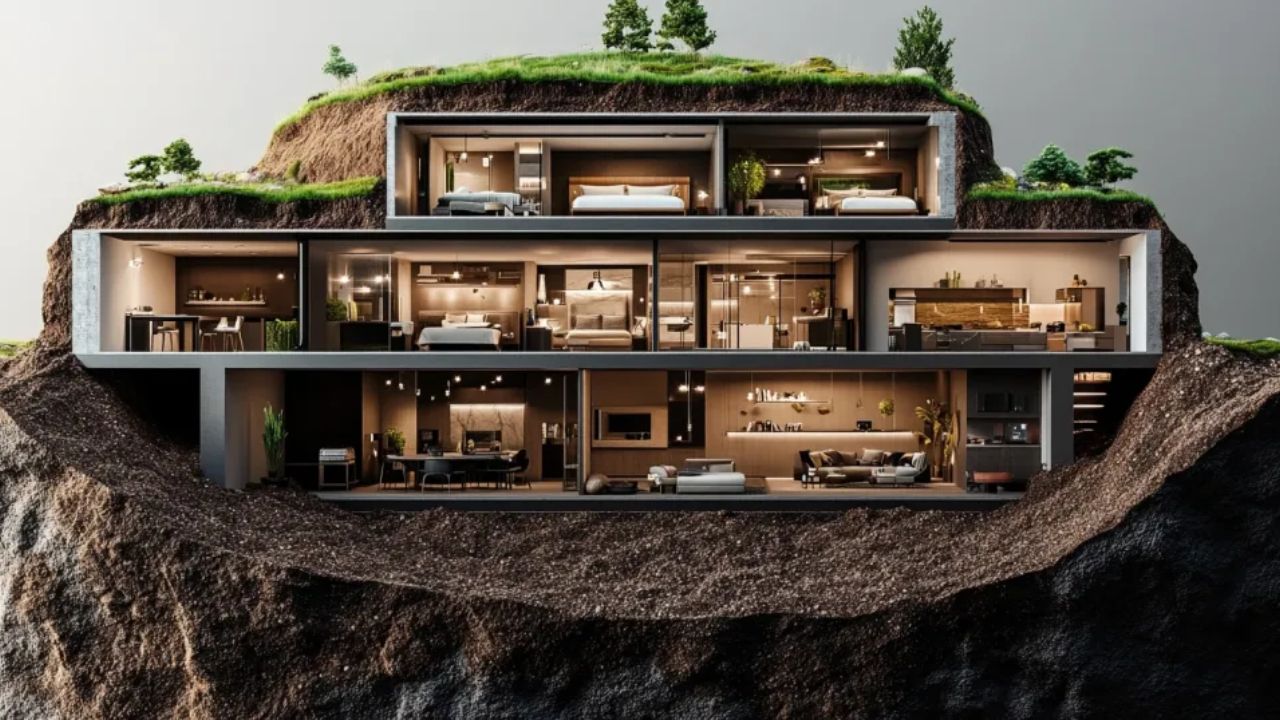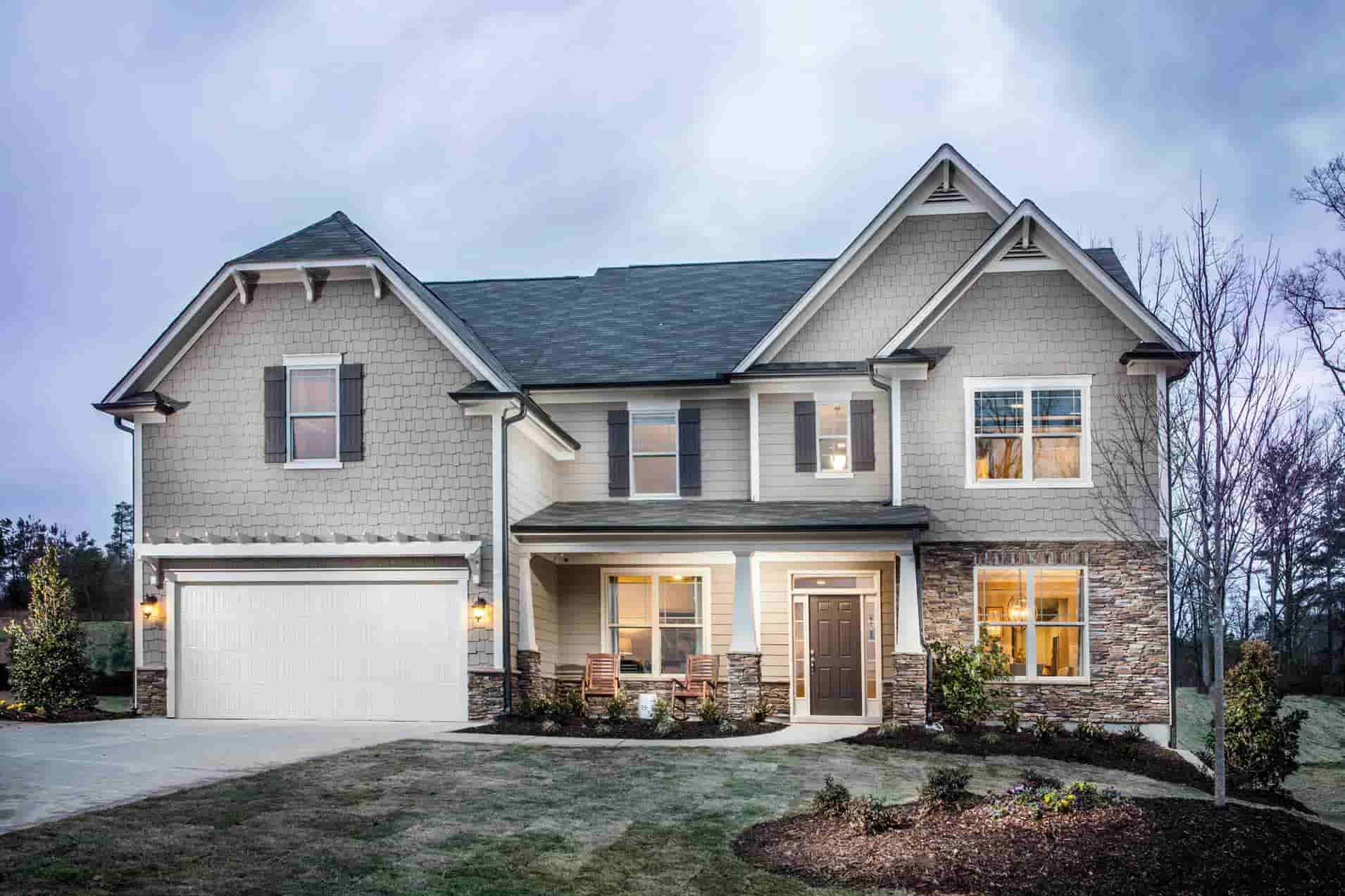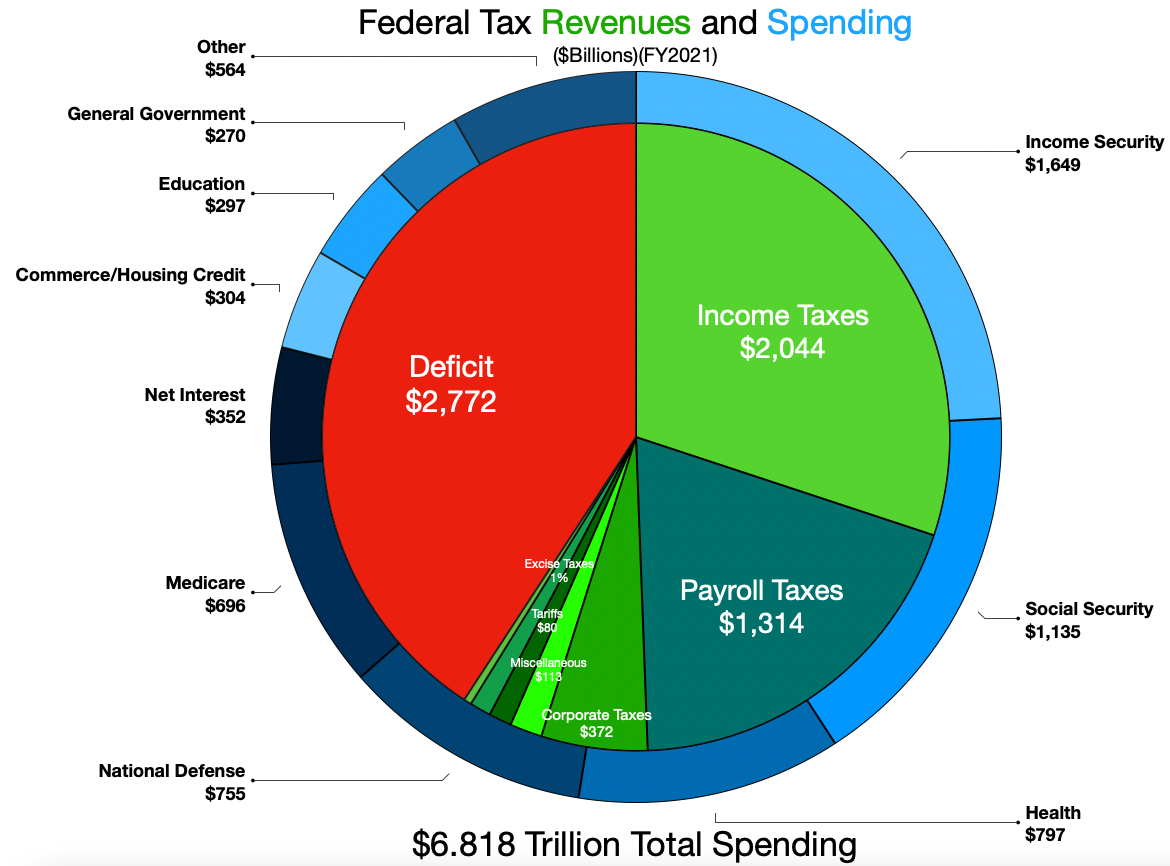
The world feels a little… unsettled, doesn’t it? From climate concerns to geopolitical shifts, it seems like barely a week goes by without a new headline prompting a collective gasp. In such a whirlwind, it’s only natural for people to wonder: what if a ‘near-extinction event’ were truly imminent? Where would you go? For most of us, such thoughts might be fleeting anxieties, but for the ultra-wealthy, it’s a call to action – and to construction. Suddenly, bunkers are not just for fringe preppers; they’ve gone seriously glam.
Forget the dingy, concrete boxes filled with canned beans and a single dusty cot. Today’s high-end shelters are sophisticated, subterranean sanctuaries, boasting five-star amenities and custom designs that would make a luxury hotel blush. We’re talking about a world where peace of mind comes with a multi-million-dollar price tag and an underground escape plan. It’s a trend that’s transforming the very definition of survival, making it not just about enduring, but thriving, even in the most unthinkable scenarios.
So, buckle up, because we’re taking you on an exclusive journey deep beneath the surface, exploring the mind-boggling claims of secret underground networks, the reasons why the world’s most influential people are investing in these hidden havens, and the incredible, often jaw-dropping, features they’re packing inside. Prepare to have your mind blown by the fascinating, and sometimes unsettling, reality of the billionaire bunker boom.

1. **The $21 Trillion Underground Network & Secret Cities**Imagine a hidden world beneath our feet, a vast, clandestine infrastructure built to shelter the elite when everything above ground crumbles. This isn’t the plot of a sci-fi movie; it’s a shocking claim made by Catherine Austin Fitts, who served as assistant secretary of Housing and Urban Development under President George H.W. Bush. Fitts alleges that the U.S. has constructed a secret underground “city” costing an astronomical $21 trillion, designed exclusively for the ultra-wealthy during a “near-extinction event.” This revelation came to light during her appearance on former Fox News host Tucker Carlson’s podcast, stirring significant public interest.
Fitts’s allegations are rooted in a 2017 report by Michigan State University economist Mark Skidmore, which highlighted a stunning $21 trillion in “unauthorized spending” within various departments between 1998 and 2015. Skidmore’s report was itself prompted by Fitts, who pointed to another report indicating the Army had $6.5 trillion in unsupported adjustments in fiscal 2015. To put that into perspective, the Army’s budget that year was $122 billion, meaning “unsupported adjustments were 54 times spending authorized by Congress.” Such discrepancies in public budgets are typically only a tiny fraction of authorized spending, making this figure truly astounding.
During her discussion with Tucker Carlson, Fitts recounted years of her own investigation into the whereabouts of this colossal $21 trillion. Her search, she claimed, led her to a startling discovery: the existence of 170 secret underground bases spread across the U.S. These aren’t just small bunkers; Fitts described them as part of an “underground base, city infrastructure, and transportation system that’s been built,” even suggesting the presence of bases located below oceans. While the specific locations and exact features of these alleged secret bunkers remain shrouded in mystery, their purported purpose is clear: to serve as a refuge for the super-wealthy during a “near-extinction event” or to facilitate undisclosed government operations, including a secret space program.
The idea that such an extensive, hidden network exists purely for a select few is certainly unsettling. Carlson himself initially assumed such bases would only be found in Washington, D.C., intended for a “nuclear war” scenario. However, Fitts confirmed that some of it is indeed “preparation for catastrophe,” expanding the scope of these secret structures far beyond traditional government emergency plans and into a realm of exclusive, high-stakes survival planning for the ultimate disaster.

2. **The Evolution of Bunkers: From Survivalist to Sanctuary**For decades, the word “bunker” conjured images of Cold War-era fallout shelters – stark concrete boxes, stocked with rudimentary supplies and a palpable sense of dread. These were the domain of dedicated survivalists, often operating off-grid and preparing for the worst with a stoic, no-frills approach. Fast forward to today, and the concept of a personal sanctuary has undergone a dramatic, luxurious transformation. Bunkers are no longer just utilitarian structures for hiding out; they’ve become architectural marvels, meticulously designed to offer every imaginable comfort and amenity, often hidden beneath some of the world’s most elite estates.
This shift, as the context reveals, signals that “bunkers have gone glam.” The modern hideaway is far removed from its austere predecessors. We’re talking about sophisticated underground compounds that seamlessly integrate into the opulent lifestyles of the ultra-wealthy. These are not merely places of survival but extensions of their high-end residences, complete with bespoke interiors and state-of-the-art systems. The focus has moved from bare-bones functionality to an unparalleled fusion of security and luxury, ensuring that residents experience no drop in comfort, even during the direst of circumstances.
The driving force behind this evolution is a desire for both long-term preparedness and peace of mind. As Naomi Corbi of SAFE, a firm specializing in ultra-secure residential design, notes, “What were once rudimentary shelters have become bespoke sanctuaries.” This means these spaces are deeply personal, reflecting the individual tastes and preferences of their owners. The transition from a simple “panic room” to a “fully integrated, high-comfort retreat” underscores a profound change in how the elite approach disaster readiness, treating it as an opportunity for ultimate customization rather than mere endurance. The result is a new generation of bunkers that redefine what it means to be truly secure and comfortable in an uncertain world.

3. **Who’s Building Them? The Elite Clientèle**The image of a “doomsday prepper” has traditionally been associated with a specific, often caricatured, demographic. However, the current boom in luxury bunker construction is shattering those stereotypes. According to Chad Carroll of The Chad Carroll Group at Compass, the clientele investing in these high-security havens extends far beyond the typical survivalist. “Clients are thinking more critically about safety and long-term preparedness,” Carroll explains, clarifying that “This isn’t limited to stereotypical ‘doomsday preppers’—we’re talking about business executives, celebrities, and global investors who want peace of mind in any situation.” This broadened appeal signals a mainstreaming of high-level preparedness within the upper echelons of society.
These are individuals accustomed to a certain standard of living, and their approach to personal safety is no different. The desire for security isn’t driven by a quirky hobby but by a pragmatic assessment of global risks and a fundamental need for autonomy and control. As Carroll further emphasizes, “Luxury is about peace of mind.” For this demographic, investing in fortified architecture, private water reserves, full-home generators, and off-grid capability is simply another layer of comfort, as essential as any other high-end amenity in their primary residences. It’s about ensuring their lives remain uninterrupted, no matter what external forces may threaten.
This elite group includes individuals who are not only prepared to invest significant capital but also possess access to crucial, often exclusive, information. Whether it’s insights into geopolitical risks, economic volatility, or emerging threats like artificial intelligence, these clients are acting on perceived existential implications that they believe are undeniable. Their decision to build these elaborate sanctuaries reflects a proactive, highly informed stance on safeguarding their families and assets, transforming disaster preparedness into a sophisticated, tailored investment rather than a reactive scramble.

4. **The Driving Forces: Global Anxiety and Elite Intelligence**The surge in demand for luxury bunkers isn’t merely a fad; it’s a response to a complex tapestry of global anxieties and insights that disproportionately affect the world’s most informed individuals. Naomi Corbi of SAFE, a firm deeply entrenched in ultra-secure residential design, articulates this perfectly: “World events have shifted from political theater to geopolitical crisis.” This nuanced understanding suggests that the threats are no longer abstract or distant but are increasingly perceived as immediate and profoundly impactful. The perceived instability across the globe is compelling the ultra-wealthy to act decisively.
For those with significant influence and access, the implications of these global shifts are magnified. Corbi points out that “for those with deep insight and access to elite-level intelligence, the existential implications are undeniable. They’re acting accordingly.” This statement is key. It implies that these clients aren’t merely reacting to mainstream news but are leveraging privileged information, perhaps from their extensive networks in business, finance, and politics, to anticipate future scenarios. Their decisions to build bunkers are therefore less about widespread panic and more about calculated, informed responses to perceived high-level risks.
Beyond direct threats, there’s also a more subtle, underlying current of general societal unease. Media theorist Douglas Rushkoff suggests that our collective interest in bunkers stems from a difficulty “imagining how the world can continue at its current pace.” He observes that “The data on the ground is indicating catastrophic failure of the systems that sustain life on the planet.” This pervasive sense of fragility, from climate change to social unrest, contributes to a heightened desire for ultimate security, driving both billionaires and, in some cases, even ordinary individuals, to contemplate drastic measures for survival.

5. **Bespoke Sanctuaries: Tailored Features for the Ultra-Wealthy**Gone are the days when a bunker meant a spartan, functional space. Today’s luxury bunkers are marvels of personalized engineering and design, reflecting the unique tastes and elaborate lifestyles of their discerning owners. Naomi Corbi of SAFE highlights this intensely personal approach: “Today’s clients want features that mirror their lifestyles—often with highly individual touches.” This level of customization transforms a mere shelter into a truly bespoke sanctuary, ensuring that even in a crisis, the occupants can maintain their accustomed level of comfort and engagement.
Examples of these extraordinary customizations are truly mind-boggling. Imagine a professional golfer, concerned about future events, installing an immersive simulator that flawlessly replicates “the world’s top 50 courses,” complete with a regulation-grade putting green—all underground. Or consider a major art collector commissioning a climate-controlled gallery within their bunker, meticulously protected to NBCET (Nuclear, Biological, Chemical, Electromagnetic, Technological) standards, safeguarding priceless collections from any conceivable threat. These aren’t just amenities; they are reflections of identity and passion, integrated into the ultimate secure environment.
The list of requested features extends far beyond these specific examples. Clients are requesting private theaters for entertainment, hydroponic gardens to ensure a sustainable fresh food supply, and even fabrication workshops for self-sufficiency. In more extreme cases, some have asked for holding cells, and surprisingly, even in-shelter crematoriums, indicating a comprehensive and sobering preparation for any eventuality. As Corbi succinctly puts it, “The scale and complexity of these environments have expanded dramatically, evolving far beyond survivalist shelters into fully integrated, high-comfort retreats.” This trend underscores a desire not just to survive, but to continue living a life of luxury, no matter the circumstances above ground.

6. **Key Builders and Their Craft: Panic Room Builders & SAFE**The intricate construction of these subterranean marvels requires specialized expertise, and a few key players have emerged at the forefront of the luxury bunker industry. Bill Rigdon, founder and CEO of Panic Room Builders, has witnessed this evolution firsthand. His firm, which began decades ago by constructing faith-based shelters for Mormons, now specializes in crafting elaborate, full-fledged underground compounds that are often cleverly hidden in plain sight. Rigdon describes the increasing complexity: “You go to your bedroom panic room, take an elevator down into a tunnel, and that leads to the bunker.” This level of integration ensures seamless, discreet access to the secure environment.
Rigdon’s projects are a testament to the advanced engineering and security measures now common in the field. Beyond secure access, his bunkers can include “private gun ranges and drone-defense hatches,” addressing a wide spectrum of potential threats. The demand for these sophisticated additions is so high that Rigdon notes a curious trend in the high-stakes Los Angeles real estate market: “The funny thing is, in L.A., when they can’t sell a house, they’ll call me and say, ‘Can you put a panic room in?’” This illustrates how embedded high-security features have become in the luxury market, transforming them from niche requirements into strategic selling points.
Another prominent firm in this specialized sector is SAFE (Strategically Armored & Fortified Environments), led by Naomi Corbi. This company focuses on “ultra-secure residential design,” creating environments that are not just safe but also highly customized to their clients’ exacting specifications. Both Rigdon and Corbi’s firms embody the pinnacle of bunker construction, merging cutting-edge security technology with unparalleled luxury to meet the demands of a clientele preparing for an uncertain future with uncompromising standards. Their work demonstrates that building for the end of the world can be an art form in itself, crafting spaces that are both impregnable and exquisitely comfortable.



